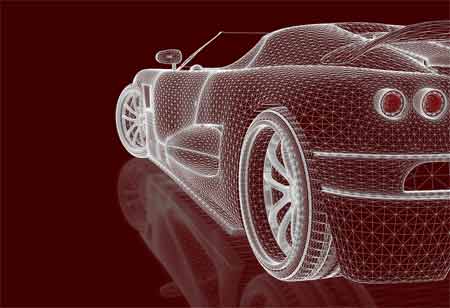THANK YOU FOR SUBSCRIBING
THANK YOU FOR SUBSCRIBING
Be first to read the latest tech news, Industry Leader's Insights, and CIO interviews of medium and large enterprises exclusively from Auto Tech Outlook

By
Auto Tech Outlook | Saturday, May 27, 2023
Stay ahead of the industry with exclusive feature stories on the top companies, expert insights and the latest news delivered straight to your inbox. Subscribe today.
As they compete to deliver and define the future of mobility, automotive firms have been at the forefront of digital transformation. Delivering next-generation automobiles that surpass the competition in terms of quality and profitability is essential for success.
In today’s growing competition automakers face many challenges, including excess production capacity and the rising cost of raw materials. Apart from these economic factors, the industry is also experiencing significant change in areas like outsourcing parts manufacturing and design. It is simply not possible to overcome these challenges with outdated, inflexible IT infrastructure.
To seamlessly adapt to customer requirements in terms of technology and design the automotive industry has had a long run of success based on its ability. As a result, cutting-edge and futuristic technology is being combined with the highest levels of product development and engineering. Firms participate in this industry and the changes that this field provides when new technological trends and advancements are made.
This industry’s manufacturers are under pressure to decrease manufacturing costs, assure high quality, and abide by stringent regulations in the current economic scenario. To holistically manage and optimise operations across the global manufacturing network, increases the demand for the right strategic actions. However, in order to standardise operations and ensure good product quality, increased focus is required for the coordination of production across facilities.
Automobile manufacturers will have to further use technology that will take them to the next level of operational efficiency. This will facilitate improved communication with the supplier network in addition to assisting them in managing their manufacturing operations (including maintenance, production, quality, and inventory). Also, there will be a stronger emphasis on applying lean principles at all levels to cut down on waste across the entire production process.
The demand for new automobiles is likely to remain suppressed in a recessionary economy and the time between initial interest and actual sale will be longer. In these circumstances, businesses need to actively improve their lead-to-conversion ratio. This will compel businesses to focus on both the quantity and quality of leads in the pipeline and to equip the sales team with quickly accessible, pertinent, and updated information to ensure a good response time to customer inquiries.
One of the most important areas of OEM focus would be to maintain the interest and profitability levels of dealerships in order to make sure that the dealership owners remain interested in this business venture. Client retention is anticipated to receive additional attention. While marketing & sales budgets are likely to continue under pressure in the short to medium term, automobile OEMs would be confined to going all out in order to attract new consumers. As a result, there will be an increase in the revenue share per customer by understanding and acting on insights from existing customers and holding them back with new car sales, more service and accessory-based engagements, used car vehicle transactions, and so on.
 Copyright © 2025 AutoTech Outlook. All Rights Reserved | Privacy Policy | Subscribe | Sitemap | About us | Feedback Policy | Editorial Policy
Copyright © 2025 AutoTech Outlook. All Rights Reserved | Privacy Policy | Subscribe | Sitemap | About us | Feedback Policy | Editorial Policy 



